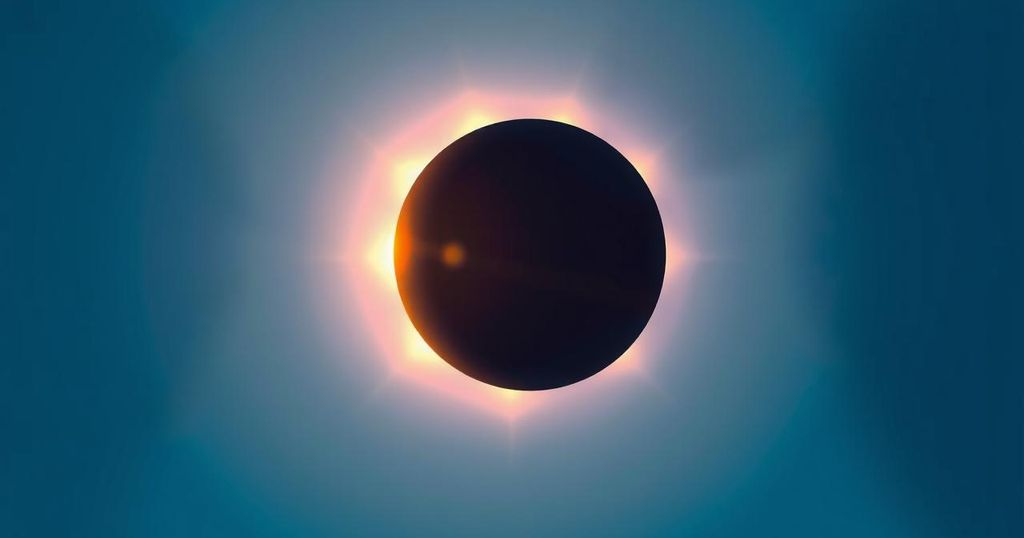A partial solar eclipse will occur today, visible across the northern hemisphere from eastern Canada to Siberia. The phenomenon lasts about four hours, with significant visibility in Europe. Observers must protect their eyes during the event to prevent damage from sunlight. The eclipse follows a recent lunar eclipse and sets the stage for future astronomical events.
Today, a partial solar eclipse will manifest as the moon partially obscures the sun, visible across the northern hemisphere from eastern Canada to Siberia. This eclipse marks the 17th of the 21st century and the first of the year, lasting approximately four hours from 8:50 AM to 12:43 PM UTC.
According to Florent Deleflie of the Paris-PSL Observatory, the initial observers will be situated in Mauritania and Morocco, while those in northern Siberia will be the last to witness the phenomenon. The partial eclipse will also extend its visibility to Europe, with a peak expected at 10:47 AM UTC over northeastern Canada and Greenland, where up to 90% of the sun’s disk will be covered.
A solar eclipse transpires when the sun, moon, and Earth are aligned. For this eclipse, the alignment is not perfect; thus, the moon’s shadow will not reach the Earth’s surface, preventing a total eclipse anywhere.
In France, the eclipse will be observable between 10:00 AM and 12:00 PM UTC, with 10% to 30% of the sun’s disk covered. However, this will not create a noticeable dimming effect to the naked eye. Observers are encouraged to utilize proper eye protection, such as eclipse glasses, to avoid potential eye damage from harmful sunlight.
This eclipse follows a total lunar eclipse that occurred two weeks prior, resulting in a ‘red’ appearance of the moon. Deleflie noted that such occurrences are common as the moon progresses through its cycle. The last partial solar eclipse visible in mainland France was on October 25, 2022, with the next total solar eclipse anticipated on August 12, 2026, significant for its obscuring effect in Paris and Marseille, though it will not directly cross France.
In summary, today’s partial solar eclipse presents a unique celestial event, primarily observable in parts of the northern hemisphere. Safety precautions, particularly concerning eye protection, are essential during the eclipse. This event follows recent lunar phenomena, illustrating the dynamic cycles of celestial bodies. Future eclipses, particularly the total solar eclipse in 2026, enhance the anticipation for astronomy enthusiasts.
Original Source: www.jordannews.jo






